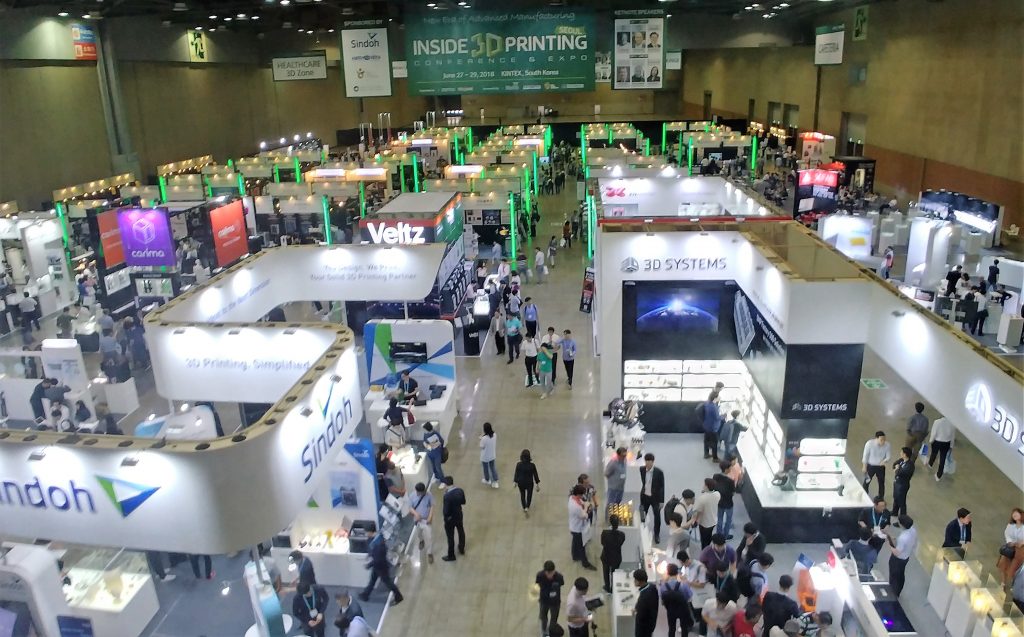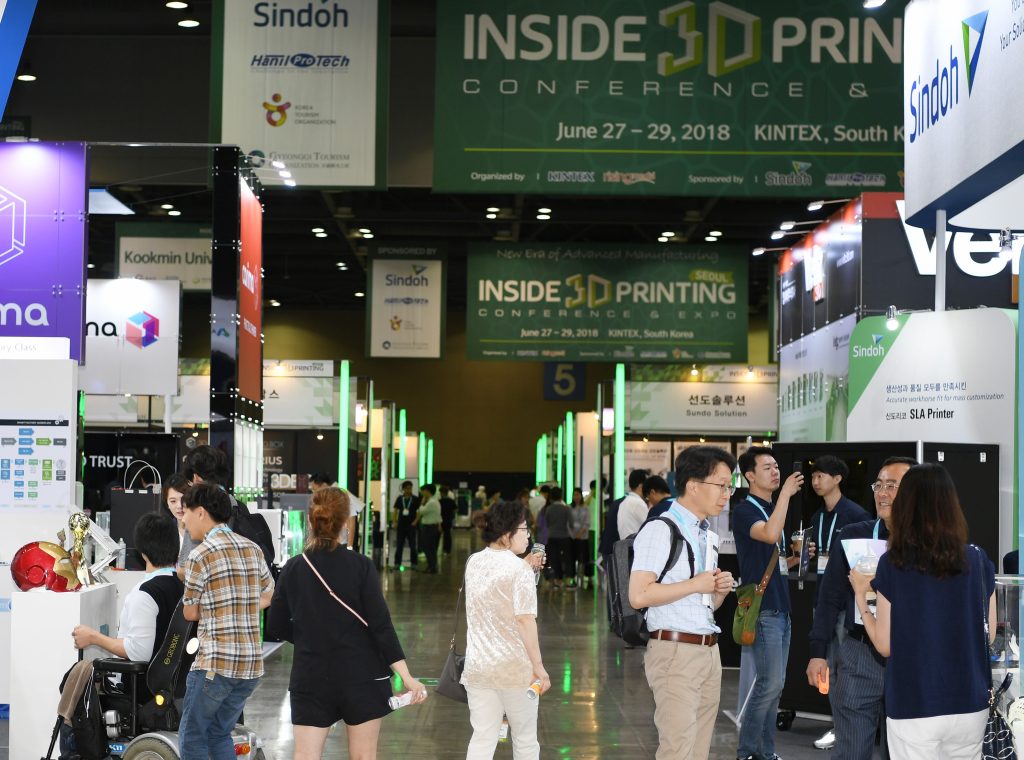Samsung Electronics Using Optomec’s Aerosol Jet 3D Printing to Make Next-Generation Consumer Electronics
 New Mexico-based Optomec, which supplies production-grade 3D printing systems for electronics applications and LENS Directed Energy Deposition 3D printers for the manufacturing of metal parts and components, just announced that Samsung Electronics will be using its patented Aerosol Jet technology. This week, it was revealed that Samsung has commissioned one of Optomec’s Aerosol Jet (AJ) 5X 3D printers, which will be put to work in its Printed Electronics Lab for the fabrication of next-generation consumer electronics.
New Mexico-based Optomec, which supplies production-grade 3D printing systems for electronics applications and LENS Directed Energy Deposition 3D printers for the manufacturing of metal parts and components, just announced that Samsung Electronics will be using its patented Aerosol Jet technology. This week, it was revealed that Samsung has commissioned one of Optomec’s Aerosol Jet (AJ) 5X 3D printers, which will be put to work in its Printed Electronics Lab for the fabrication of next-generation consumer electronics.
First unveiled back in 2014, the AJ 5X was developed for those customers working to develop electronics like molded interconnect devices (MIDs), sensors, smart phones, and tablets. Many customers use the system to work on more advanced fabrication projects, as it has the ability to print high conductivity inks and dielectric materials in complex shapes on a variety of substrates and 3D surfaces, which makes it possible to shrink electronic devices down.
[Image: Optomec]
Optomec’s Aerosol Jet technology accurately and precisely deposits electronic inks through the use of aerodynamic focusing. First, the material is place into an atomizer, which creates a mist of ink-laden droplets that is delivered to the deposition head. There, a sheath gas (usually compressed air or clean, dry Nitrogen) surrounds the aerosol as an annular ring to focus it. Once this gas and the aerosol pass through the profiled nozzle, acceleration occurs and the aerosol is focused into a tight stream of droplets that flow inside the gas, which also insulates the nozzle to prevent any material clogs.
“The resulting high velocity particle stream remains focused during its travel from the nozzle to the substrate over a distance of 2 to 5 mm maintaining feature resolution on non-uniform and 3D substrates,” the Optomec website states. “The system is driven by standard CAD data which is converted to make a vector based tool path. This tool path allows patterning of the ink by driving a 2D or 3D motion control system. Printed features range from 10 microns to millimeters.”
![]() The Optomec AJ 5X system can print features that range from millimeters down to 10 microns, and the 3D printer also supports 5 axes of coordinated motion with its 200 x 300 x 200 mm print envelope. The company has 20 years worth of materials and process research to its name, can help industry customers improve performance and lower product costs, and it also offers the necessary software to go with its Aerosol Jet systems for printed electronics.
The Optomec AJ 5X system can print features that range from millimeters down to 10 microns, and the 3D printer also supports 5 axes of coordinated motion with its 200 x 300 x 200 mm print envelope. The company has 20 years worth of materials and process research to its name, can help industry customers improve performance and lower product costs, and it also offers the necessary software to go with its Aerosol Jet systems for printed electronics.
The patented Aerosol Jet process is used by many to make things like sensors, RF interconnects, flexible hybrid electronics, wire replacement bonds for IC packaging, and multi-layer, miniature circuits; the technology can even be used to 3D print antennas directly onto electronics enclosures.
Discuss this story and other 3D printing topics at 3DPrintBoard.com or share your thoughts in the Facebook comments below.
[Source: Optomec]
Inside 3D Printing Seoul Meets the Smart Factory
Inside 3D Printing Seoul is entering its 6th year and has become one of Asia’s premier additive technology events for the digital transformation of design, development and manufacturing all driven by Industry 4.0.

With the theme of ‘A New Era of Advanced Manufacturing’, Inside 3D Printing decided to diversify its exhibitors. This was needed due to the continuous increase in demand from advanced manufacturing in South Korea, which includes CAD/CAM/CAE, industrial robot, drones, metrology, inspection, monitoring, tooling, mold, CNC, smart sensors and automation verticals.
South Korea is not only an advanced country in IT infrastructure but also a manufacturing powerhouse. Korean major corporations, called ‘Chaebol’, including Samsung, Hyundai, LG, SK, Hanwha, CJ, etc., have decided to invest KRW 300 trillion (or approximately USD 250 billion) in the next 5 years in order to find new promising industry sectors.
Unlike a number of non-specialized events in Asia, Inside 3D Printing Seoul brings the 10,000+ active industrial AM users as well as supplier groups together every year. This event is the best launch pad for both domestic companies looking for a global audience and for international companies looking to tap the Korean market.

Further, more diversified products or additive technology for advanced manufacturing are to be exhibited for the first time at Inside 3D Printing Seoul. With the name of ‘Smart Factory Zone’, the first exhibitors will be given various benefits including 20% off price, premium location near cafeteria and maximum exposure in multiple online/offline channels.
Good news for this year’s event is for 3DPrint.com and SmarTech Analysis to join as co-producers of Inside 3D Printing Seoul, which will further upgrade the event and provide the best marketing platform for 100+ exhibitors, sponsors and 10,000+ buyers from around the world.

Another piece of good news is that it is still available to exhibit before 10,000+ buyers and active user groups from 28 countries with increased discount rate compared to last year.
If interested in limited exhibiting or speaking opportunities for forthcoming Seoul event taking place on June 26-28, please contact Inside 3D Printing Secretariat (inside3dprinting@kintex.com) or visit our website (www.inside3dprinting.com/seoul) for more information.

